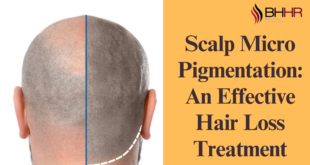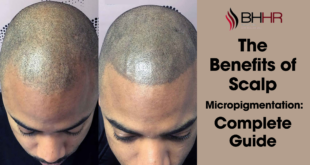Warning: count(): Parameter must be an array or an object that implements Countable in /var/www/made4media.dk/gratislinkbuilding.dk/wp-content/plugins/martins-link-network/martinsLinkNetwork.php on line 156
Regarding gender transition, every step is profoundly personal and transformative. One of the most noticeable aspects of transition, especially for transgender women, is the change in appearance that comes from hormone therapy, surgeries, and other treatments. Among these, MTF hairline regrowth is often overlooked but can be incredibly impactful in creating a more feminine appearance. A soft, rounded hairline can enhance how someone feels about their gender presentation, bringing greater confidence and comfort in everyday life. This complete guide will explore all aspects of MTF hairline regrowth—from hormone therapy to surgical and non-surgical treatments—so you can navigate the process with clarity and confidence.
What Is MTF Hairline Regrowth?
MTF hairline regrowth refers to the process of restoring and reshaping the hairline of a transgender woman to achieve a more feminine, rounded, and lower hairline. A male-pattern hairline tends to be more receded, with a higher forehead and prominent widow’s peaks. In contrast, a female-pattern hairline is lower, with soft curves rather than sharp angles. For many transgender women, regrowing their hairline is an essential part of aligning their physical appearance with their gender identity. A more feminine hairline can make a big difference in how someone looks and feels, particularly when combined with other feminizing procedures like hormone therapy and facial feminization surgery.
The Role of Hormone Therapy in MTF Hairline Regrowth
Hormone therapy, especially the use of estrogen and anti-androgens, is a cornerstone of the medical transition for transgender women. It’s responsible for many feminizing effects on the body, including breast development, fat redistribution, and softer skin. But how does it impact hair growth, especially regarding MTF hairline regrowth?
Hormone therapy’s impact on hair regrowth:
- Slows down male-pattern hair loss: Anti-androgens like spironolactone reduce the effects of testosterone on hair follicles, slowing or halting male-pattern baldness. This allows hair that has not yet entirely disappeared to remain intact.
- Encourages the growth of finer, softer hair: Estrogen can lead to finer, smoother hair, similar to female-pattern hair. However, the degree of regrowth on the hairline may be limited, especially for those who have experienced significant hair loss before starting hormone therapy.
It’s important to note that hormone therapy alone may not be enough to fully regrow a receded hairline, especially in cases where hair follicles have become inactive or damaged due to years of male-pattern baldness.
Surgical Options for MTF Hairline Regrowth
For those seeking more immediate and noticeable changes to their hairline, hair transplant surgery is one of the most effective options for MTF individuals. This procedure applies harvesting healthy hair follicles from regions of the scalp where hair is always dense and transplanting them to the hairline, where hair has thinned or receded.
- How it works: The surgeon will carefully create a new, more feminine hairline based on your facial structure. This can include rounding out the corners and lowering the hairline to create a softer, more traditionally feminine appearance.
- Types of hair transplants: There are two primary types of hair transplant surgeries—Follicular Unit Extraction (FUE) and Follicular Unit Transplantation (FUT). FUE involves extracting and transplanting individual hair follicles, while FUT concerns taking a strip of scalp and transplanting it to the hairline. Both methods can be effective for MTF hairline regrowth, and your surgeon will recommend the best option based on your needs.
The Benefits of Hair Transplant Surgery
Hair transplant surgery offers several benefits for those pursuing MTF hairline regrowth:
- Permanent results: Unlike topical treatments or temporary solutions, hair transplants provide permanent results. Once the transplanted hair takes root, it will grow naturally in its new location.
- Natural appearance: When done by a skilled surgeon, hair transplants can create a natural-looking hairline that blends seamlessly with your existing hair. The result is a softer, more feminine look that enhances your overall appearance.
- Boosts confidence: Having a feminine hairline can significantly boost self-esteem and help transgender women feel more comfortable in their skin.
Non-Surgical Methods for Enhancing MTF Hairline Regrowth
For those who prefer non-surgical options, several treatments can help stimulate hair growth and encourage a more feminine hairline.
1. Topical Treatments
Minoxidil is a famous over-the-counter treatment for hair loss. It’s available in liquid or foam form and is applied directly to the scalp. When used consistently, Minoxidil can help to stimulate hair follicles, encouraging regrowth in areas where hair has thinned.
- How it works: Minoxidil increases blood flow to the hair follicles, providing them the nutrients they need to grow. It’s particularly effective when used in combination with other treatments like hormone therapy.
- Results: Minoxidil can take several months to see noticeable results, and it works best in areas with recent hair thinning. It may be less effective for significant hairline recession.
Best Practices for Promoting MTF Hairline Regrowth
Whether you’re pursuing surgical or non-surgical methods, there are several things you can do to maximize your chances of success when it comes to MTF hairline regrowth. Here are some best practices:
- Gentle Hair Care: Feast your hair with care to avoid unnecessary damage. Avoid tight hairdos that pull on the hairline, such as ponytails or braids, and limit the use of heat-styling tools like straighteners or curling irons.
- Healthy Diet: Your hair’s health is closely linked to your diet. A nutrient-rich diet that includes vitamins like biotin, vitamin E, and omega-3 rich acids can help hair regrowth. Foods like salmon, walnuts, and leafy greens are great choices.
- Stress Management: Stress can contribute to hair loss, so finding ways to handle stress can help your hairline regrowth efforts. Activities like yoga, meditation, or simply getting enough sleep can positively impact.
Read More: Best MTF Hair Transplant for a Soft Feminine Hairline
Conclusion
MTF hairline regrowth is a transformative process that can make a world of difference for transgender women looking to enhance their feminine appearance. While the journey may be gradual, with options ranging from hormone therapy to surgical interventions, the results are gratifying. Whether you’re just starting your transition or are exploring ways to feminize your appearance further, addressing your hairline is a significant step toward embracing your true self. With patience, consistency, and the right approach, you’ll soon see the changes you’ve been hoping for, bringing you one step closer to feeling at home in your body.
 Gratis Linkbuilding | GratisLinkbuilding.dk Gratis Linkbuilding – få DoFollow backlinks
Gratis Linkbuilding | GratisLinkbuilding.dk Gratis Linkbuilding – få DoFollow backlinks


